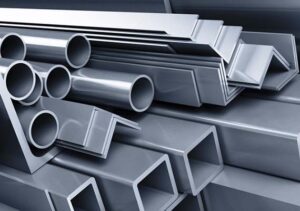
Ukrainian metallurgical enterprises increased production of rolled steel in January-September this year, according to preliminary data, by 22.7% year-on-year, to 4.821 million tons from 3.929 million tons.
According to Ukrmetallurgprom on Tuesday, steel production during the period increased by 28.2% to 5.884 million tons, and pig iron production by 21.9% to 5.356 million tons.
In September, the company produced 503.9 thousand tons of rolled products, 610 thousand tons of steel, and 624.1 thousand tons of pig iron, compared to 589.3 thousand tons of rolled products, 690.7 thousand tons of steel, and 643.6 thousand tons of pig iron in the previous month.
As reported, in 2023, Ukraine increased production of total rolled products by 0.4% compared to 2022 – up to 5.372 million tons, but reduced steel production by 0.6% to 6.228 million tons, and pig iron by 6.1% to 6.003 million tons.
In 2022, Ukraine reduced production of total rolled products by 72% compared to 2021, to 5.350 million tons, steel by 70.7% to 6.263 million tons, and pig iron by 69.8% to 6.391 million tons.
In 2021, the company produced 21.165 million tons of pig iron (103.6% compared to 2020), 21.366 million tons of steel (103.6%), and 19.079 million tons of rolled products (103.5%).
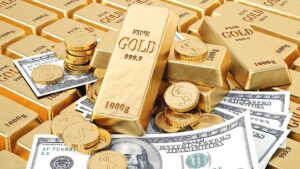
According to preliminary estimates by the National Bank of Ukraine (NBU), Ukraine’s international reserves decreased by 8.1%, or $3.44 billion, to $38 billion 898.6 million in September.
“This dynamics is due to the NBU’s foreign exchange interventions to cover the structural deficit of foreign currency in the market and smooth out exchange rate fluctuations, as well as the country’s debt payments in foreign currency,” the central bank said on its website on Monday.
In September, the NBU’s net international reserves (NIR) decreased by $2.8 billion, or 9.9%, to $25 billion 544 million, which is lower than the quantitative performance criterion (QPC) in the updated EFF program of the International Monetary Fund (IMF), according to which Ukraine’s NIR should have been at least $28.8 billion at the end of September this year.
However, by the end of the year, this figure is expected to be at least $26.3 billion.
The NBU noted that foreign exchange interventions on the interbank market and debt payments were partially offset by proceeds from the placement of foreign currency domestic government bonds (DGBs), as well as international aid, the amount of which in September, according to the NBU, was one of the smallest since the beginning of this year.
“This once again demonstrated the irregularity of aid from international partners, which is typical for this year,” the central bank emphasized.
According to the published information, the National Bank sold $3 billion 213.8 million in the foreign exchange market and bought $0.6 million in reserves, while the NBU’s net sale of foreign currency in September increased to $3.21 billion from $2.68 billion.
It is noted that the government’s foreign currency accounts at the National Bank received $674.7 million, of which $603.6 million came from the placement of foreign currency government bonds, $60 million through the World Bank and $11.1 million from the Council of Europe Development Bank.
The government paid $552.4 million for servicing and repayment of the public debt in foreign currency, including $456.3 million for servicing and repayment of foreign currency domestic government bonds, $52.1 million for servicing and repayment of the debt to the World Bank, and $44 million for repayment to other international creditors.
In addition, Ukraine paid $729.8 million to the International Monetary Fund.
“In September, due to revaluation, the value of financial instruments increased by $381.8 million. The current volume of international reserves provides financing for 5.0 months of future imports,” the regulator stated in a statement.
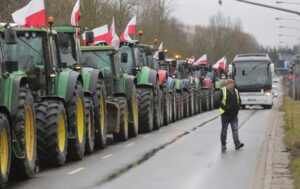
Polish farmers have announced a possible protest action in the form of blocking the movement of trucks in front of the Medyka-Shehyni checkpoint from October 8 to December 31, 2024.
Currently, vehicle clearance is carried out as usual.
In the event of a strike, please follow the advice and news from the State Customs Service of Ukraine.
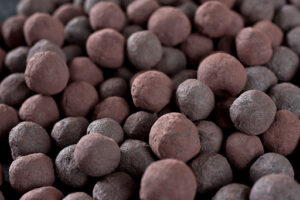
Ferrexpo plc, a mining company with major assets in Ukraine, produced 4 million 567.168 thousand tons of pellets in January-September this year, up 41.9% year-on-year (3 million 218.273 thousand tons).
According to a press release on Monday, Ferrexpo produced 1 million 269,727 thousand tons of pellets in the third quarter of this year, down 14.4% from the previous quarter (1 million 483,468 thousand tons).
At the same time, the total production of commercial products (pellets and iron ore concentrate) in the first nine months of 2014 increased by 47.5% compared to the same period in 2023, to 5 million 125.034 thousand tons from 3 million 474.860 thousand tons. In particular, the production of commercial concentrate amounted to 557.866 thousand tons against 256.587 thousand tons in January-September 2023.
In addition, it is specified that the company, in particular, produced 326.168 thousand tons of DR pellets in the first nine months of 2014 (it did not produce any in the first nine months of 2013), 3 million 780.610 thousand tons of premium pellets and 460.390 thousand tons of other pellets.
The press release notes that during the quarter, the Group successfully operated one or two pelletizing lines (out of four), with a focus on producing higher quality products. DR pellets production continued during the third quarter, with a total of three deliveries to two customers.
Commenting on the Group’s performance, Lucio Genovese, Interim Executive Chairman, stated that the third quarter was a very challenging operational and macroeconomic environment for the company.
“As we emphasized in our interim results, the requirement to import 80% of our electricity from our western neighbors remains in place, and the resulting high tariffs continue to have a negative impact on our costs. The situation is further complicated by higher shipping rates and additional costs for war risk insurance,” Genovese said.
According to him, to mitigate the pressure on profitability, the group’s strategy was to focus on selling higher quality iron ore products to customers in close geographical proximity. This involved expanding the customer base and selling premium DR pellets in the MENA region.
The top manager emphasized that the ability to quickly adapt to modern challenges is a testament to the flexibility built into the operating model. This allowed the company to slightly reduce the impact of both the aforementioned factors and lower iron ore prices, when the fall in the 65% Fe benchmark price briefly tested price support levels of $100/tonne during the quarter, bottoming out at levels last seen in 2022.
At the same time, Genovese emphasized some positive changes in the market at the end of the reporting period: prices began to recover amid improved sentiment caused by the announcement of economic stimulus measures in China.
For his part, Group CFO Nikolay Kladiev noted that the combined effect of much lower iron ore prices and higher production costs put significant pressure on earnings in the third quarter.
“The high electricity tariffs that I pointed out in the interim period continue to grow and increase our C1 costs compared to the initial period. This year we also continued to see higher freight rates and additional war risk insurance premiums. In response, we have sought to contain costs wherever possible and manage our cash position, which remained at around $100 million at the end of the third quarter,” explained the CFO.
He also said that in the last days of September, Chinese stimulus measures, including the lifting of restrictions on home purchases, provided long-awaited support for iron ore prices.
“The pessimism about iron ore prices seems to have subsided for now, but the recent volatility in the third quarter does not provide any assurance that prices will remain at this level or improve further. We will continue to maintain a vigilant approach to our financial and operational performance for the remainder of the year,” Kladiev concluded.
As reported earlier, Ferrexpo produced 3.845 million tons of pellets in 2023, down 36.5% from 2022.
Ferrexpo owns a 100% stake in Yeristovo Mining, 99.9% in Bilanivsky GOK and 100% in Poltava Mining.
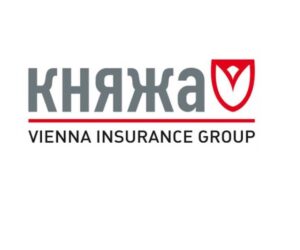
In January-June 2024, the insurance company “Knyazha Life Insurance Group” (Kyiv) collected UAH 28.843 million of insurance payments, which is 1.4% less than in the same period a year earlier.
This is reported on the website of the rating agency Standard-Rating, which affirmed the company’s financial strength rating/credit rating at uaAA+ for the reporting period.
The volume of insurance payments and reimbursements made by the company for the first half of 2024 amounted to UAH 11.8 million, which is 39.9% less than the volume of payments for the first half of 2023.
Thus, the insurer’s claims ratio decreased by 26.22 percentage points to 40.91%. The insurer’s acquisition expenses for the first six months of 2024 amounted to UAH 0.790 million, which is 81.83% less than in the same period of 2023.
According to RA, the company’s operations were profitable in the first half of 2024. In particular, the insurer’s net profit for the first half of 2024 amounted to UAH 5.267 million.
As of July 1, 2024, the company’s assets increased by 6.88% to UAH 852.216 million, equity – by 1.16% to UAH 278.167 million, liabilities – by 9.90% to UAH 574.049 million, while cash and cash equivalents decreased by 28.31% to UAH 1.795 million.
Thus, as of the beginning of the second half of 2024, equity capital covered 48.46% of the insurer’s liabilities, and 0.31% of its liabilities were secured by cash and cash equivalents.
Also, as of July 1, 2024, the insurer formed a portfolio of financial investments in the amount of UAH 825.354 million, which included bank deposits and investments in government bonds. Thus, as of the beginning of the second half of 2024, liquid assets (cash and cash equivalents, bank deposits and government bonds) were 1.44 times higher than the insurer’s liabilities.
RA notes that a high level of external support for the company is provided by its shareholder, Vienna Insurance Group Wiener Städtische Versicherung AG, an international insurance group headquartered in Austria, represented by 50 companies in 30 countries and a leader in the insurance market of Central and Eastern Europe.